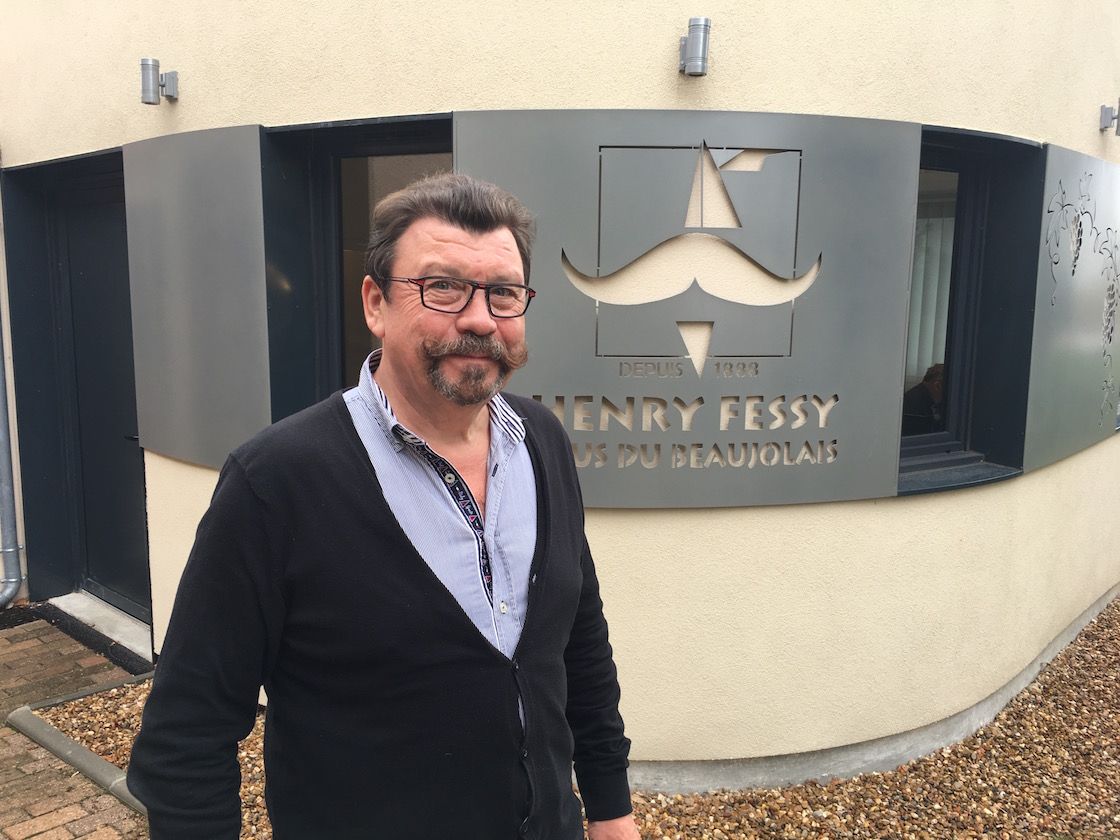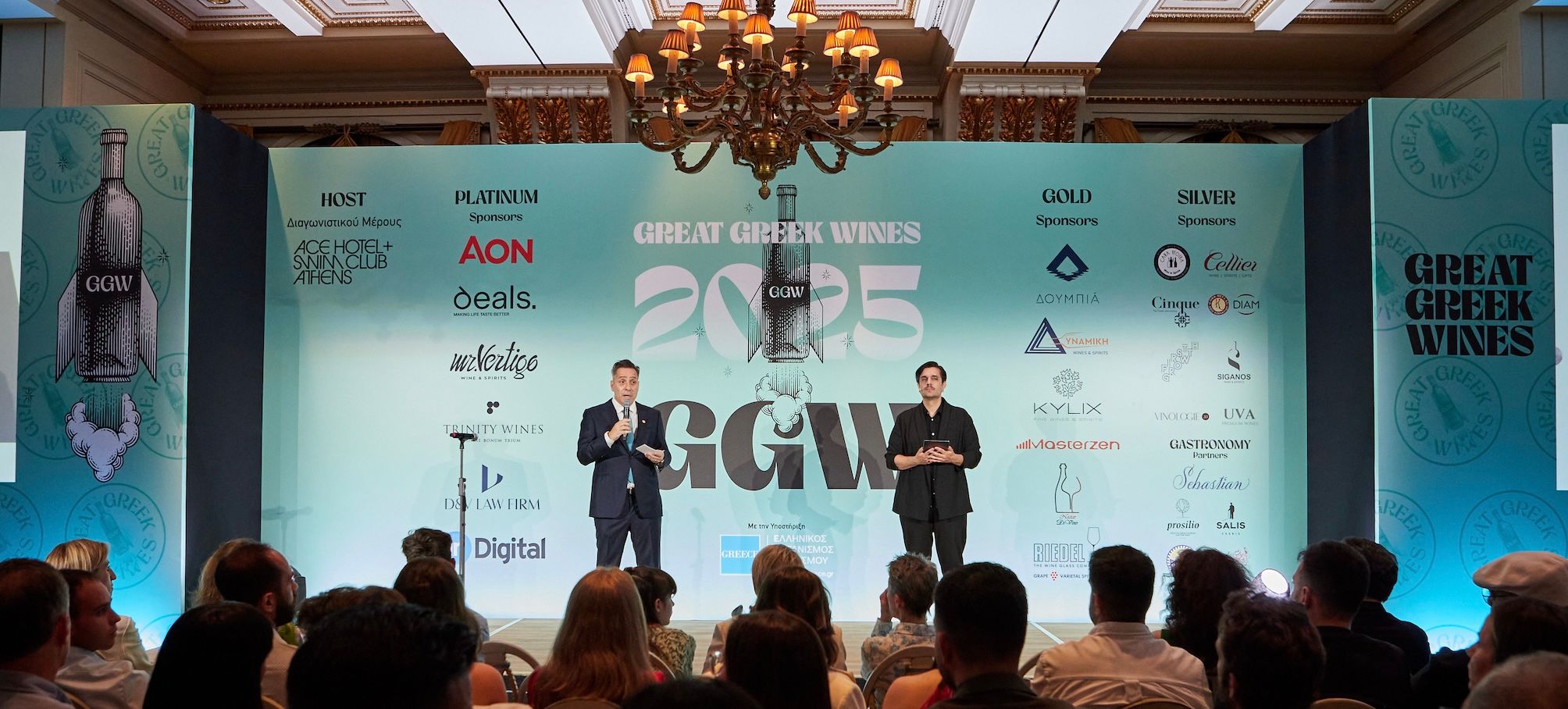Sales of Beaujolais wines are up – 15% for Beaujolais-Villages AOC and over 50% for the Crus – thanks to a new generation discovering the unbridled pleasure of traditionally vinified Gamay. A good time to visit Henry Fessy.
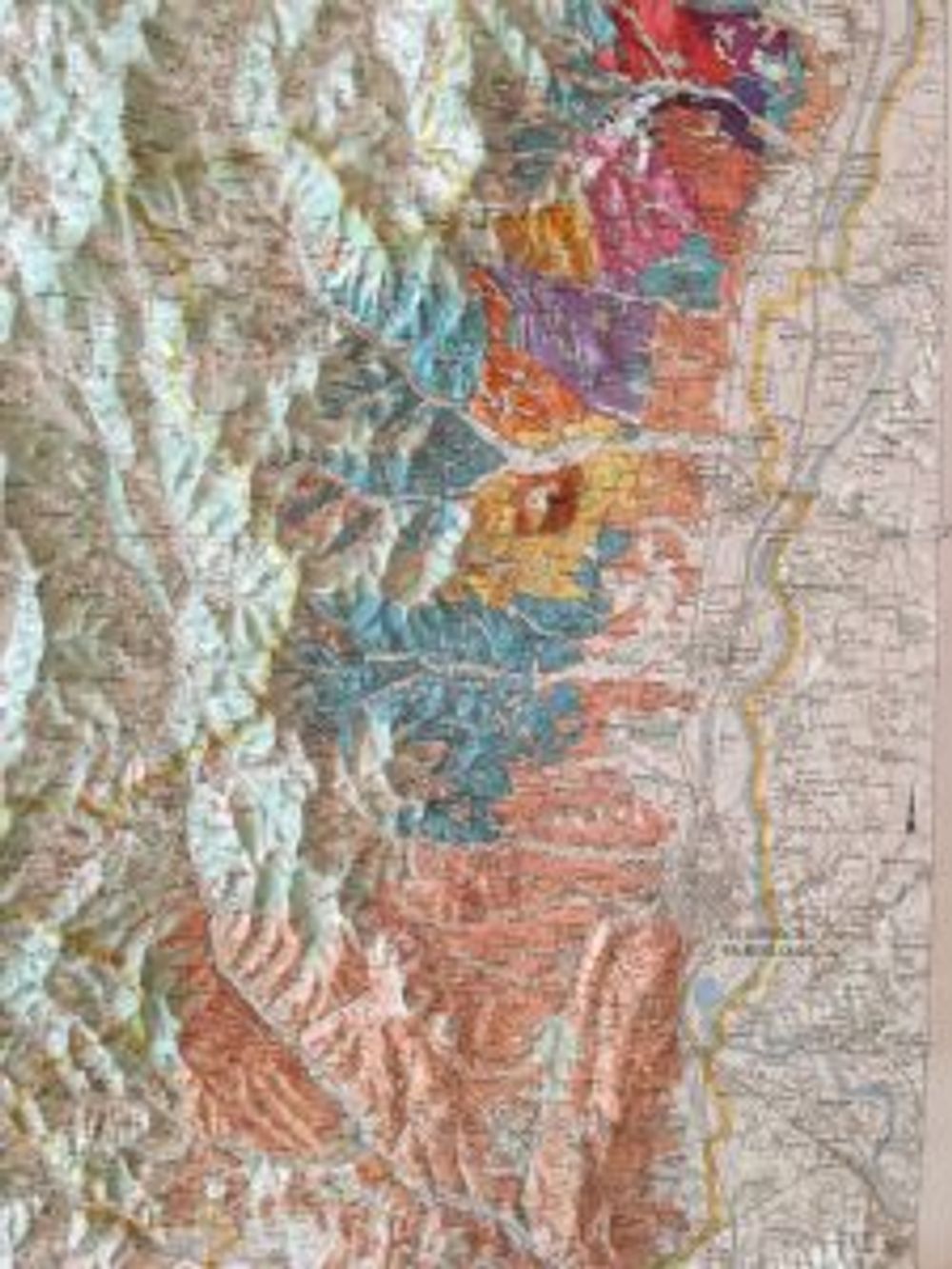
The complex topography of Beaujolais means great variation in these terroir-driven wines
The Beaujolais Nouveau Run was insane. On the third Thursday of November, a hoard of red-trousered gentlemen would bomb down to Beaujolais – often in vintage sports cars – bomb back to Blighty and then get absolutely hammered on cheap, spritzy purple wine.
It was the 1980s and 90s and Soho would then be awash with purple vomit and unconscious media and City types, lying prone outside brasseries that would have purple balloons and bunting up to signal that they were taking part in Beaujolais Nouveau Day.
Forget sans-culottes, these guys were absolutely trousered.

Gamay at Fleurie. Churches were built to protect the vines from disease.
How times have changed. The young wine is still celebrated in Beaujolais itself where there are some 120 different festivals every year. Nouveau Runs do still happen but tend to be more corporate, charity-related events now. And thankfully more sober.
Beaujolais Nouveau is still being made but is no longer a mainstay of the Beaujolais Wines marketing department. There is quite a big deal made of it by the Japanese, but in Britain the celebration has all but disappeared where the young wine and quaffing culture simply don’t match.
The result is that Beaujolais is becoming recognised again for the right reasons – the major wine growing region it always was and still is.
Beaujolais’s time is now make no mistake

Laurent Chevalier, winemaker at Henry Fessy, at one of the ‘premier cru’ vineyards at Château des Reyssiers
If you were at the Beaujolais 2015 vintage tasting in London in July or if you were at Noble Rot’s Beaujolais evening in November you don’t need me to tell you that there is a real a buzz about Beaujolais right now.

Yes! There is still a windmill at Moulin-à-Vent
Real wine collectors, those in the know and now younger wine drinkers who revere the Gamay grape are singing its praises and appreciating its value for money.
I won’t repeat what I said back in the Summer, if you want some of the background click here.
In a nutshell Beaujolais has never tasted so contemporary.
Tasting the wines of Henry Fessy, a wine producer founded in 1888 and bought by Burgundy’s Maison Louis Latour in 2008, it is immediately apparent the quality and terroir-variation on show.
But more than that – these wines are very modern in feel – they have crisp acidity, a ‘croquant’ texture and structure that are balanced by the full, juicy Gamay fruit. They are well-constructed wines, that hail from a history of experience and aged vines, but then have an almost contemporary architecture, if you will.
They will be enjoyed by traditionalists but also by a younger wine clientele that lean towards minimal intervention – little use of oak, some whole bunch pressing and so on.

The blue stones on the Côte de Brouilly give the wine unique grainy tannins
Latour is not the only negociant from Burgundy who has acquired down south. Louis Jadot bought Chateau des Jacques in 1996 and has been ploughing ahead with its own style of oaked Beaujolais, made to age. More on that here.
Part of the reason for the Burgundian investment is that while Beaujolais was out of favour, it was clearly a good time for mergers and acquisitions. The other is that aged Beaujolais in certain cru and in certain vintages can resemble Burgundian Pinot Noir, a point made by Louis-Fabrice Latour when announcing the Fessy acquisition.
What’s new at Henry Fessy – Pinot Noir!
There are a number of changes that the Louis Latour acquisition has brought to Henry Fessy both inside and outside the portfolio.
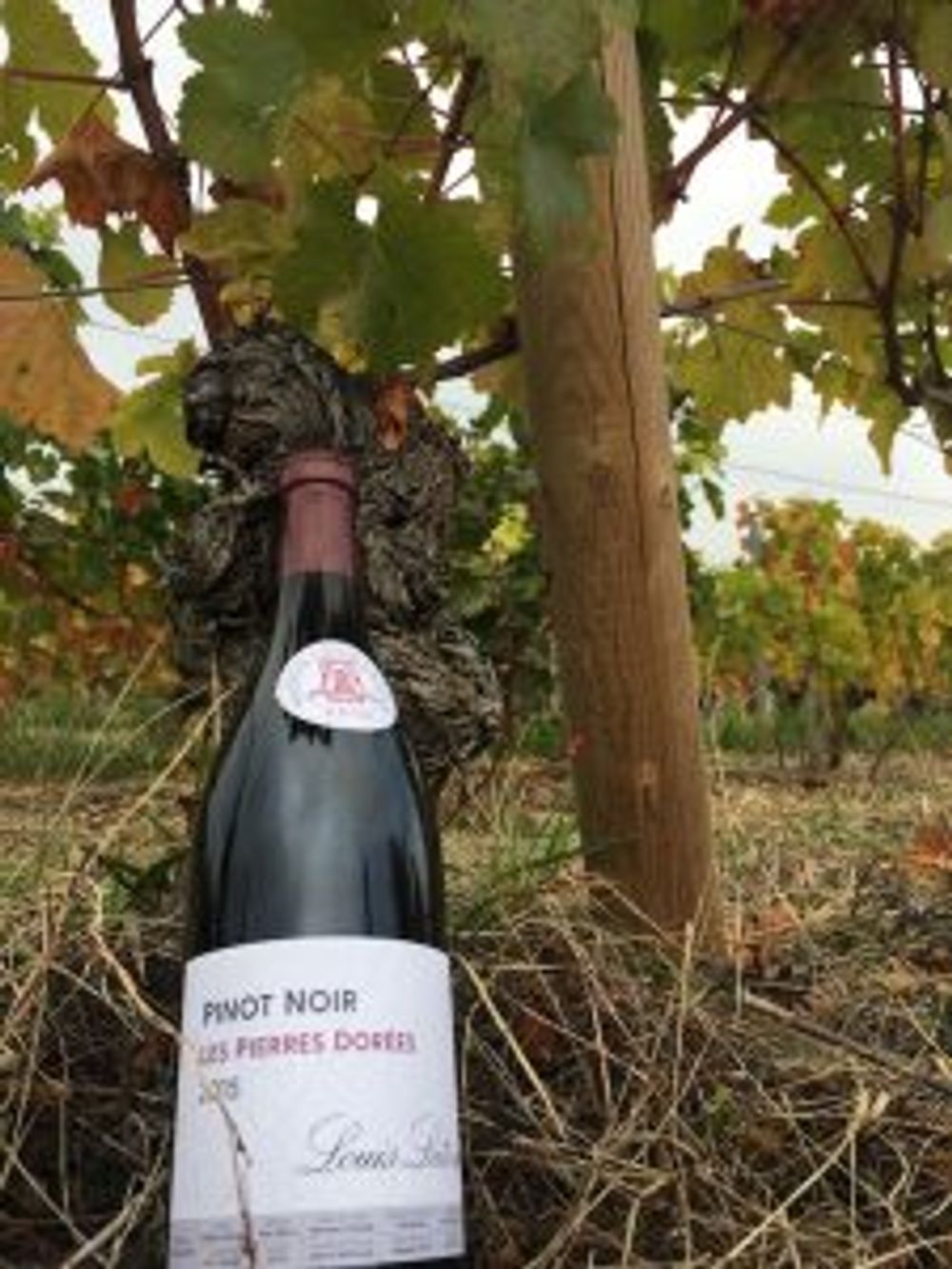
The first is that Louis Latour is now making its first Pinot Noir in Beaujolais with the aid of Henry Fessy. Called Pierres Dorées after the lieu dit that is so named because of the iron-oxide tinted stone of the region, this is an area at the Southern-most tip of Beaujolais, and one where the bulk of Beaujolais Villages comes from.
Pierres Dorées is an attractive, medium-bodied Pinot Noir with an individual character.
Tasting the wine in the vineyard: it is an interesting halfway point between Old World and New World – ie it didn’t have the refinement or acidity profile of a Burgundy nor the fruit-power of a New World Pinot but a compromise between the two and definitely Pinot Noir – it reminded me of some of the Pinot Noir grown in the Languedoc and Loire.
Although Pinot Noir has existed here for generations and, against regulations, used in Beaujolais blending, Latour and Fessy hope that the doubling of the current 25 hectares vineyards and political moves will see it released under a new DOC Côteaux Bourguignons.
In the meantime it bears Louis Latour on the label and is made by Fessy’s winemaker Laurent Chevalier. It is currently being released to the trade with an RRP of £15.
The move towards premier cru – Fessy’s portfolio given more hierarchy
A full repertoire tasting of Henry Fessy involves two whites and 11 reds, and that is not taking into account wines it makes in Provence and the Beaujolais Nouveau which it still makes 50,000 cases of, mainly destined for the Japanese.
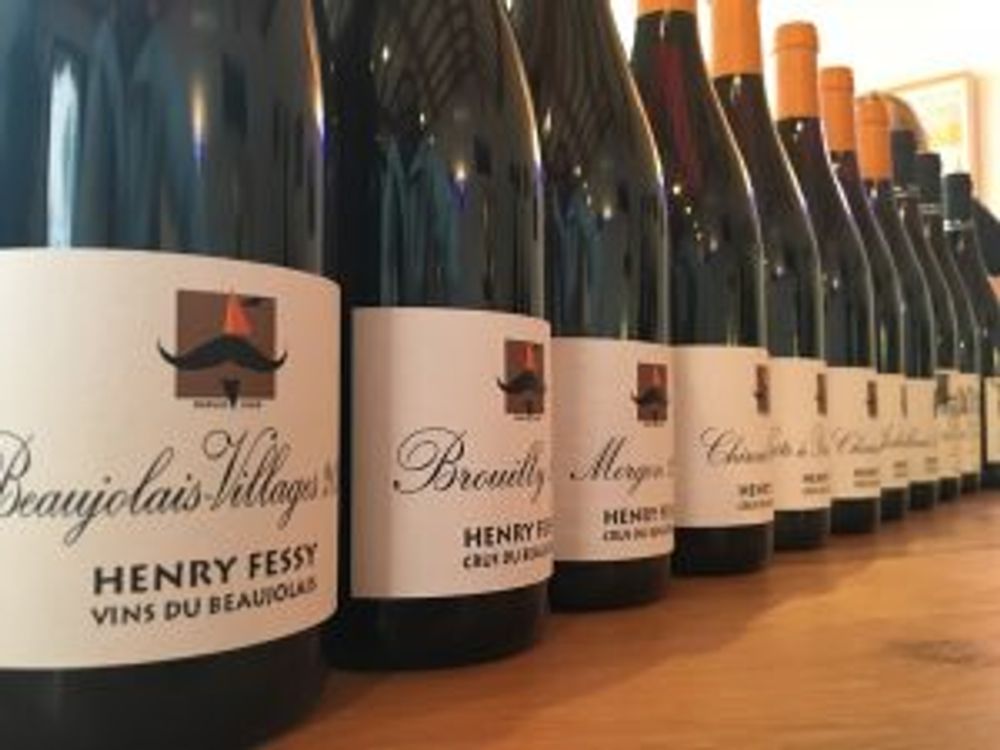
Henry Fessy has always been one of the few Beaujolais producers that has a range encompassing all of the levels and crus.
To taste the range is to get an education in Beaujolais wine – each wine an accurate representation of the DNA of the specific region the wine is from and the way in which it has been finessed under Chevalier’s direction.
For a start 2015 is a top vintage – a hot, dry and sunny first half of the year was followed by plenty of sunshine and very little rain, resulting in the best maturation levels that many winemakers can remember. It is rich, has a lot of fruit and great acidity which means it will probably last longer than the equally great 2009 vintage.
The sheer fun of the Beaujolais-Villages with its juicy fruit and crunchy tannin is immediately superseded by the Brouillly, the first of the crus we taste and at 14 days has double the maceration. It’s a more rounded drink with much silkier tannins and savoury notes.
As we taste through the crus each wine, the Morgon, Chiroubles, Côte de Brouilly, Chénas, Juliénas and Saint Amour have distinct terroir-driven nuances.
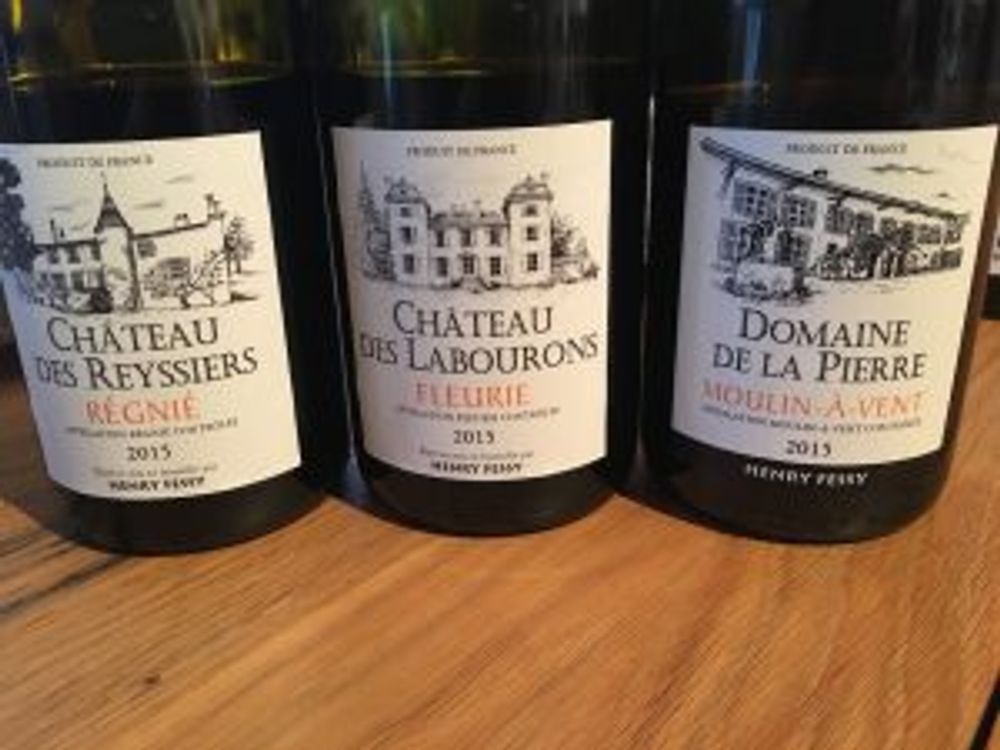
The three top cru, being given ‘premier cru’ treatment
The big change is that the three other crus – Régnié, Fleurie and Moulin-à-Vent – are all given the premier cru treatment and released under their respective domaines, with separately-designed labels, to both reflect the quality of the provenance but also to give the large range some hierarchy and perspective.
It’s in keeping with the times. Sales of the Beaujolais crus are up but so is the value – as much as 46% this year. It is also partly the effect of the Burgundian investment.
So, normally I would recommend three wines or so from a tasting. With this I would recommend a bottle of each. In fact I think Latour should be selling special tasting cases of Fessy wine with every Beaujolais cru and level – they would make great gifts and really emphasise the uniqueness that they have with the Fessy range.
Food pairing that really worked
During my stay I tried these wines with a variety of food and here are some of the best pairings.

Beaujolais Chardonnay is one of the region’s best-kept ‘secrets’. This Beaujolais Blanc is an unpretentious, well-made Chardonnay that worked perfectly with charcuterie as an aperitif – sharp enough to cut through the fat and big enough to stand up to the vinegar in the cornichons.
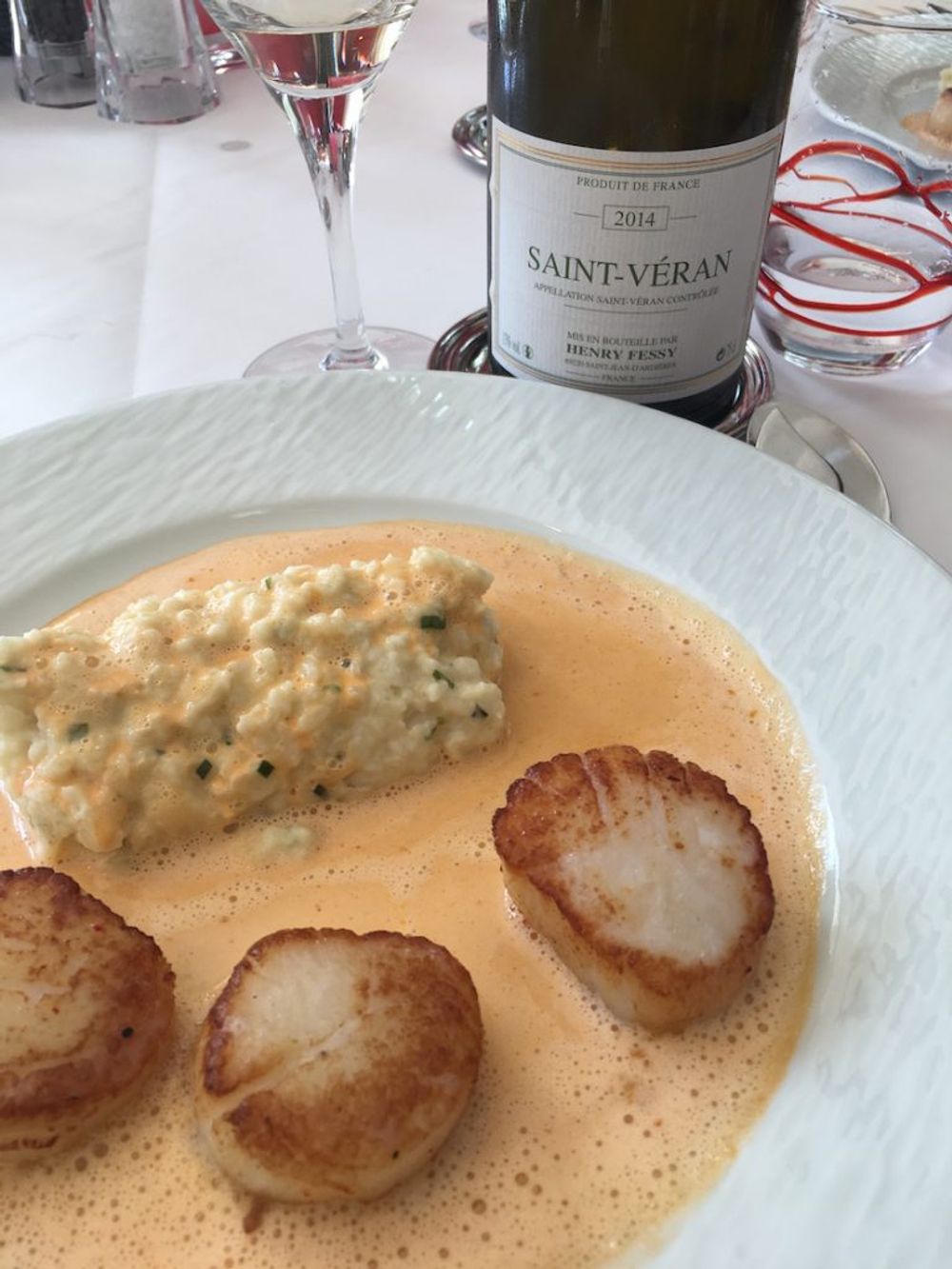
From the southernmost part of the Mâconnais, close to Pouilly-Fuissé, comes this agreeable food wine. Again, it won’t wine any prizes drunk on its own but it is well made, good value and goes excellently well with shellfish and rich sauce.
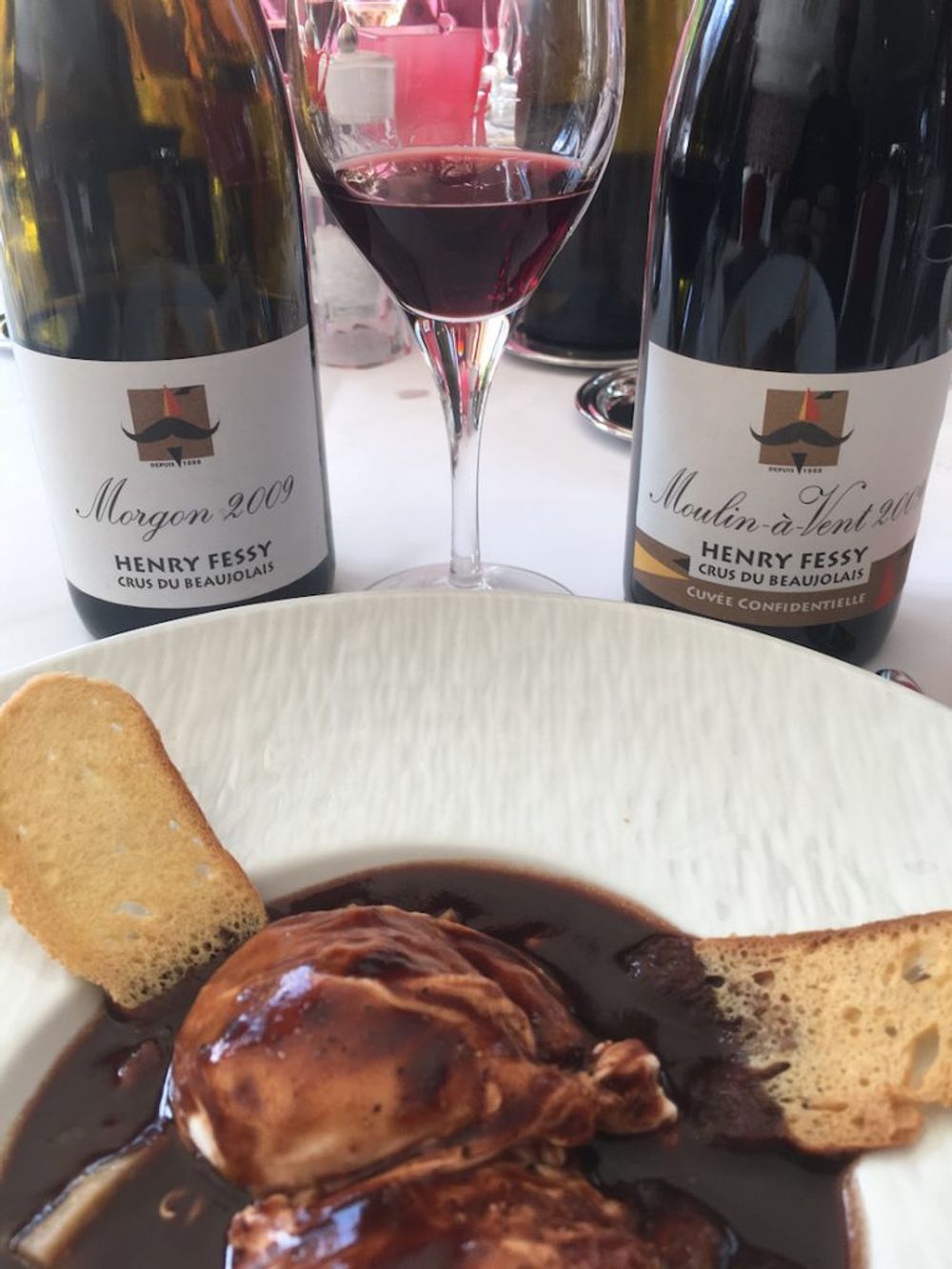
Beaujolais ages very well indeed. 2009 and 2010 were first class vintages and it was good to try the Morgon and Moulin-à-Vent 2009 again. Both had developed secondary characteristics, were still beautifully fresh and had a great presence in the mouth. A perfect match for Oeufs en Meurette – eggs in a red wine sauce.
